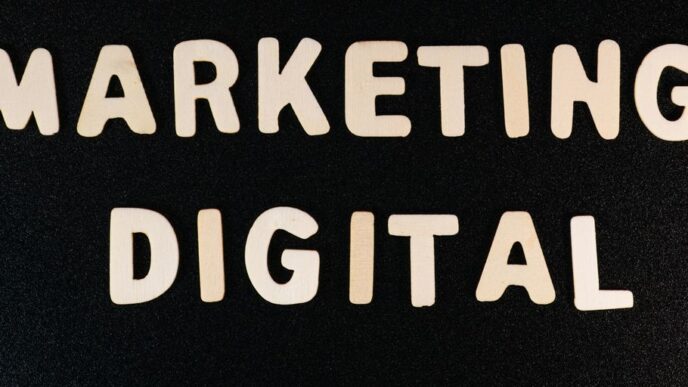Welcome to the world of e-commerce, where technology is reinventing the way we shop and transforming the entire user experience. From browsing through countless virtual shelves to making secure online transactions, every aspect of our shopping journey is now powered by cutting-edge technology advancements. In this fast-paced digital era, delivering an exceptional user experience has become paramount for businesses striving to stay ahead in the competitive e-commerce landscape. So buckle up as we dive deep into how technology is revolutionizing the realm of online shopping and enhancing customer satisfaction like never before.
Introduction to E-commerce Technology
E-commerce technology has come a long way in recent years, and it shows no signs of slowing down. By improving user experience, e-commerce businesses can increase sales and conversions. Here are four ways that e-commerce technology can be used to improve user experience:
- Personalization
E-commerce businesses can use technology to personalize the shopping experience for each customer. This can be done by providing recommendations based on past purchases, using data from social media platforms, or tracking browsing behavior. By showing customers products that they are likely to be interested in, businesses can make the shopping experience more enjoyable and increase the likelihood of a sale.
- Improved search functionality
Many e-commerce websites have improved their search functionality in recent years, making it easier for customers to find what they are looking for. Using filters and advanced search features, customers can narrow down their options and find the perfect product more easily. This saves time and frustration, making the overall shopping experience better.
- Interactive content
Including interactive content on an e-commerce website can improve the user experience by keeping customers engaged. For example, video product demonstrations or 360-degree photos allow customers to see products in detail before making a purchase decision. This type of content is especially useful for complex products that require explanation before purchase.
- Mobile optimization
As more and more people shop on mobile devices, it’s important that e-commerce businesses optimize their websites and online stores for mobile devices. This includes implementing responsive design, simplifying navigation, and optimizing page load speeds. By prioritizing mobile optimization, businesses can enhance user experience, increase conversions, and stay competitive in the rapidly growing mobile market.
Benefits of Improved User Experience
The online world is constantly evolving, and as a result, so is user experience (UX). In order to keep up with the competition, e-commerce businesses must continuously improve their UX. This can be achieved through various means, but technology plays a big role.
Some benefits of improved UX include:
Increased Sales: Good UX can lead to increased sales and conversions. Studies have shown that even a small improvement in UX can have a significant impact on revenue. For example, Amazon reported that every 100ms of improvement to their site speed led to an extra 1% in sales.
Improved Brand Perception: A good UX can also improve brand perception and loyalty. Users who have a positive experience with a company are more likely to recommend it to others and continue doing business with them in the future. They’re also more likely to forgive the occasional mishap if they know that the company is generally easy and pleasant to deal with.
Reduced Support Costs: Improved UX can also lead to reduced support costs. If users can easily find what they need on your site or app, they’re less likely to need help from customer service. And when they do need help, they’ll be more likely to use self-service options like FAQs or live chat, which are much cheaper than traditional phone support.
The Impact of Technology on User Experience
In recent years, technology has had a profound impact on the user experience in e-commerce. By providing more seamless and efficient ways to engage with digital content, technology has made it easier than ever for consumers to find and purchase the products they need online.
In particular, responsive design and mobile-friendly platforms have been crucial in making the e-commerce user experience more user-friendly. As more and more consumers turn to their mobile devices to shop online, it’s become essential for retailers to provide an optimized experience that can be easily accessed and navigated on a smaller screen.
Additionally, technological advances in personalization and recommendation engines have helped e-commerce businesses better understand their customers’ needs and preferences. By utilizing data gathered from past interactions, these tools are able to provide tailored content and product suggestions that can improve the overall experience for each individual user.
As payment options have become more convenient and secure, they’ve played a role in making the e-commerce experience more streamlined and hassle-free. With options like Apple Pay and PayPal, customers can now complete transactions with just a few clicks, without having to enter their credit card information every time. This not only saves time but also reduces friction during the checkout process, leading to a smoother overall experience.
Strategies for Improving User Experiences
When it comes to improving user experience, technology can play a major role. In the e-Commerce world, there are a handful of tried and true strategies that can be used to improve user experiences.
One strategy is to focus on the speed of your website. Studies have shown that users are more likely to abandon a website if it takes more than a few seconds to load. There are a number of ways to improve website speed, including optimizing images, using caching techniques, and minifying code.
Another common strategy for improving user experience is increasing the interactivity of your website. Users want to be able to interact with your site in a variety of ways, so giving options like video, audio, and interactive content can make a big difference.
Making your site mobile-friendly is essential in today’s market. More and more users are accessing the internet from their mobile devices, so it’s important that your site is designed with this in mind. Mobile-friendly features include responsive design, touch-friendly interfaces, and easy-to-use navigation.
Examples of Existing Solutions
There are many different ways that technology can be used to improve the user experience in e-commerce. Some of the most common and effective methods include:
- Using live chat support to answer customer questions in real time.
- Offering a search function on your website so customers can easily find what they’re looking for.
- Utilizing customer reviews and ratings to give potential buyers an idea of what others think of your products or services.
- Implementing a “recommended for you” section on your website or app based on past purchasing behavior or browsing history.
- Allowing customers to track their orders in real-time so they always know where their purchase is and when it will arrive.
Challenges Faced in Implementing E-commerce Technology
There are many challenges faced when implementing e-commerce technology, such as the following:
- Ensuring that the website is secure and PCI compliant.
- Creating a user-friendly and intuitive website design.
- Developing robust and stable software applications.
- Incorporating third-party applications and integrations seamlessly.
- Managing hosting, networking, and server infrastructure effectively.
- Maintaining high standards of uptime and performance.
- Optimizing the website for search engines
Future Trends in E-commerce Technology
The future of e-commerce technology is focused on two main areas: improving the user experience and making the technology more accessible.
User experience is becoming increasingly important as a differentiator in the e-commerce space. Technology that can create a better user experience, whether it’s through personalization, recommendation engines, or customer service chatbots, will be in high demand.
Accessibility is also key, as e-commerce needs to reach beyond desktop and laptop computers to mobile devices and smart TVs. Technology that makes it easy for customers to purchase products and services on any device will be essential.
Conclusion
Overall, technology is playing an increasingly major role in improving user experience across the e-commerce industry. Online stores need to continue to take into consideration how users interact with their websites and focus on making the process of shopping online as streamlined as possible by leveraging modern technologies such as artificial intelligence and machine learning. By doing so, they can ensure that customers have a positive experience when interacting with their sites which results in more conversions and ultimately higher profits for businesses.











